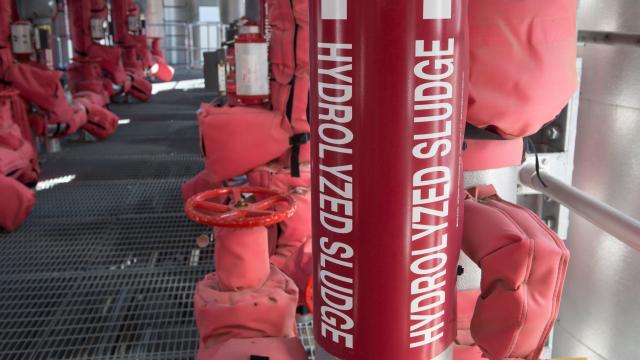U.S. President Donald Trump’s environmental rollbackapalooza has been well-documented, as has the U.S. Environmental Protection Agency’s transformation into the Environmental Pollution Agency (please clap). But a new report chronicles what that means on the ground, including the local impacts in U.S. districts and states of representatives and senators tasked with making sure the EPA does its job.
The analysis, released by the Environmental Data Governance Initiative (EDGI) on Thursday, shows that Clean Water Act violations are up in 84% in districts home to members of the House Energy and Commerce Committee and in 70% of the states home to senators on the Senate Environment and Public Works Committee. At the same time, enforcement has declined 17% and 22% in those districts and states respectively. All told, it paints a picture of Trump’s willful disregard for the environment and Congress’ inability or lack of interest in doing anything about it, even when it’s in the EPA overseers’ backyards.
The reasons for poor oversight are manifold, but one is the challenge of data access itself. EDGI began as a watchdog for the Trump administration’s efforts to memory hole federal data and webpages devoted to climate. But in expanding into the realm of federal data mining, it’s become clear just how much of a mess the data actually is.
“As an organiser, as an advocate, we have to empower people to realise that they deserve better, and they can’t realise they deserve better if all we do is stick some data on a website and no one understands what it says, they don’t know how it was collected, or they don’t know the flaws,” said Monica Unseld, one of the report authors and the founder of Data for Justice.
Sara Wylie, the report lead author and EDGI’s project coordinator, said on a Zoom call that the impetus for the new report stemmed out of a previous analysis the group did on declining EPA enforcement and presented before the House Energy and Commerce Committee where EDGI “realised that this House committee and then the Senate committee really don’t have access to this data for their districts or their states.”
The new report looks at Clean Water Act violations in those locations. While the analysis initially included Clean Air Act and Resource Conservation and Recovery Act ones, the data is so convoluted and poorly collected, it ended up being essentially useless. But the results from the Clean Water Act analysis — which draws on data from 2011 through 2019, a period that doesn’t even include Trump’s covid-19 ‘get out of jail free’ card for polluters — are nevertheless shocking. Both Republican and Democratic members of the committee represent districts and states that have seen spikes in pollution violations. At 87%, slightly more Democrats represent locations with increases in violations, but 79% of Republican-represented locations have seen increases as well.
The median increase in the number of violations across districts is a staggering 98% (the average was 711%, which the report notes could be due to improved reporting that began in 2016). Some places are dealing with rampant polluters. Republican Senator Dan Sullivan sits on the Senate EPW Committee, yet his home state of Alaska has seen 841 Clean Water Act violations per 100 facilities. Meanwhile, Democratic Representative Yvette Clark’s district has seen a staggering 2,650 violations per 100 100 facilities. EDGI has created individual state and district report cards to dive into each location, giving communities a new tool to fight against the big polluters.
And really, communities are unfortunately being burden with this task. Inspections have declined under Trump as have enforcement actions. This trend pre-dates Trump, however, and points to long-term efforts by Republicans to hollow out the federal government so polluters can act with impunity.
“Historically, enforcement has been declining and we documented that,” Wylie said. “It was known before Trump took office that 25% of the companies operating in the U.S. were operating in significant violation of Clean Water Act. But what we’ve demonstrated is that situation has gotten even worse under Trump, where we see these big increases in violations and at the same time decreases in inspections and decreases in enforcement actions, particularly decreases in penalties.”
The report’s numbers tell a sharp data story, but this is really about lived experiences for millions of Americans living in the shadow of polluters. Industrial sites and poor infrastructure have proliferated near Black, brown, and Indigenous communities, exposing people who live there to toxic chemicals and other harms. That includes egregious examples that have penetrated the national consciousness like Flint and Newark’s lead pipe and water treatment scandals as well as fenceline communities in Houston and across North Carolina who dealt with toxic floods from hurricanes Harvey and Florence. But as the report shows, corporations are taking advantage of Trump’s lax enforcement to make matters even worse in numerous places around the country. Laying bare the full extent of the pollution problem is the first step to fighting back.
“What’s powerful about this work is that you’re giving communities numbers to go along with the rumours and the stories,” Unseld said. “I work in the environmental justice movement, and I have friends in Houston who have been saying since covid started, we’re getting a lot more smells, we’re seeing a lot more accidents. I live here in Louisville, Kentucky. We have an area called Rubbertown and people are saying since Trump took office, we’re getting more odours.
“You have all of these what science would normally say are anecdotal stories. But this group has given us data and numbers to back that up so that community residents can go to their members of Congress and say this is actually endangering our health.”
